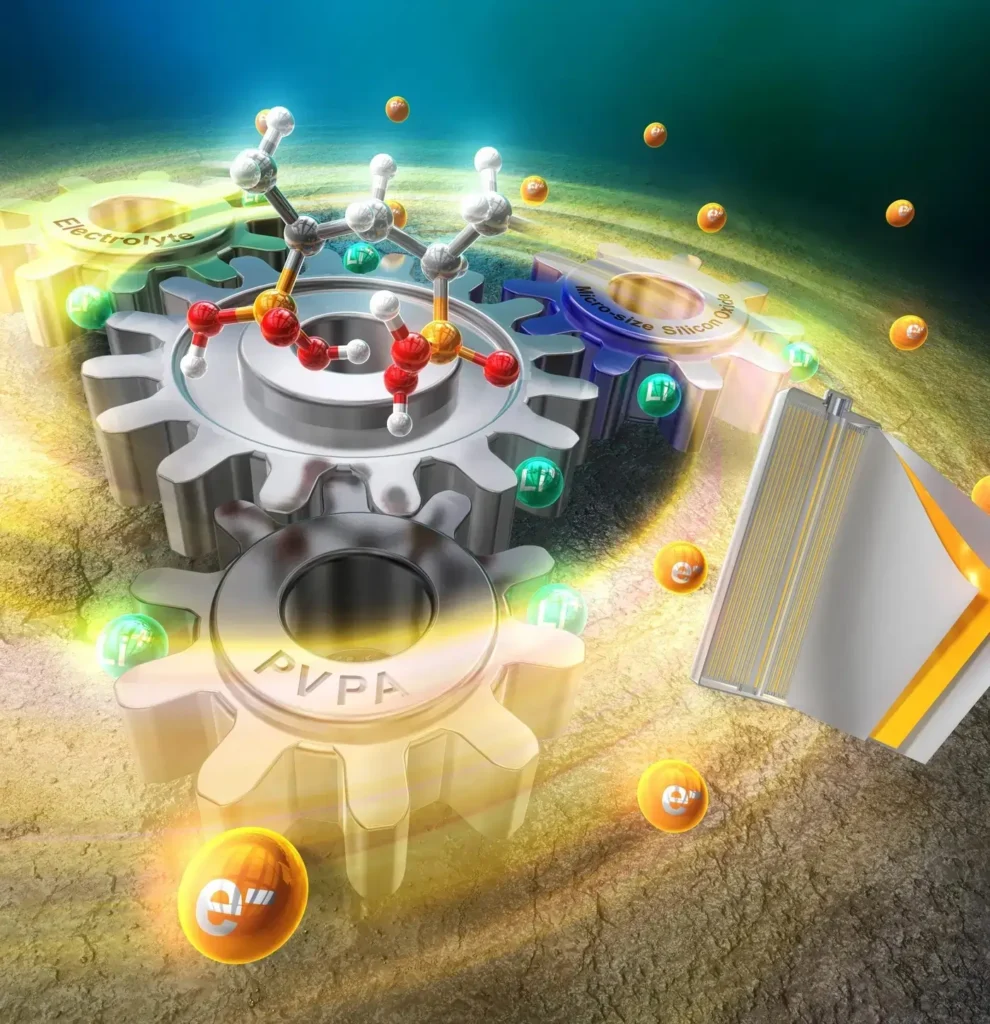Lithium-ion batteries have become indispensable in our modern world, powering everything from smartphones to electric vehicles. However, as demands for energy storage solutions continue to evolve, there’s a growing need for improved performance and durability in these batteries. One promising avenue for enhancement lies in the development of advanced binders that can address the inherent challenges faced by key battery components, such as the anode material silicon oxide (SiO).
SiO holds great promise as an anode material due to its high capacity and low cost. However, it encounters significant hurdles, including poor conductivity and substantial expansion during charging. These issues result in slower charging rates and reduced overall battery performance. To overcome these challenges, effective binders play a crucial role in stabilizing the SiO-based anode and improving overall battery performance.
A recent study published in the prestigious journal ACS Applied Energy Materials sheds light on a groundbreaking approach to enhance lithium-ion batteries. Led by Professor Noriyoshi Matsumi from the Japan Advanced Institute of Science and Technology (JAIST), in collaboration with researchers from Maruzen Petrochemical Company Ltd., the study explores the use of poly(vinyl phosphonic acid) (PVPA) as a novel binder for micro-SiO electrodes.
Professor Matsumi highlights the potential of PVPA as a game-changer in extending the lifespan of high-performing lithium-ion secondary batteries. This is particularly significant in the context of electric vehicles (EVs), where there’s a growing demand for long-lasting battery solutions. Compared to conventional binders like poly(acrylic acid) (PAA) and poly(vinylidene fluoride) (PVDF), PVPA offers improved performance and durability, paving the way for more efficient energy storage in EVs.
The study involved fabricating electrodes with PVPA, PAA, and PVDF binders and subjecting them to rigorous electrochemical experiments and density functional theory analysis. Remarkably, PVPA demonstrated significantly stronger adhesion to the copper support compared to conventional binders, leading to enhanced durability in lithium-ion batteries.
Furthermore, the PVPA-based cell exhibited nearly double the discharging capacity of PAA-based cells after 200 cycles, achieving an impressive 1,300 mAhg-1SiO. Notably, scanning electron microscopy revealed no signs of exfoliation from the current collector even after 200 cycles of charge-discharge, highlighting the superior stability of PVPA-based batteries.
Beyond the laboratory, Maruzen Petrochemical Company Ltd. has pioneered an industrial production process for PVPA, laying the groundwork for real-world applications. The collaborative efforts between JAIST and Maruzen Petrochemical Company Ltd. are poised to accelerate the adoption of this groundbreaking technology in commercial battery production.
The implications of this research extend far beyond electric vehicles. With patents filed domestically and internationally, the development of industrially feasible, high-performing binders like PVPA holds the potential to revolutionize energy storage across various sectors. From trains to ships and aircraft, the widespread adoption of these advanced materials promises a future powered by durable, high-energy-density batteries, free from concerns about performance degradation over time.
In conclusion, the innovative use of advanced binders, exemplified by PVPA, represents a significant step forward in the quest for more efficient and durable lithium-ion batteries. As the world transitions towards a cleaner and more sustainable energy future, such advancements play a pivotal role in driving the widespread adoption of electric vehicles and other energy-intensive applications.


